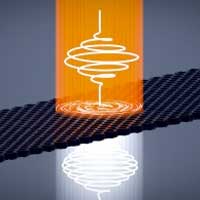 Just as pressing a guitar string produces a higher pitch, sending laser light through a material can shift it to higher energies and higher frequencies. Scientists have discovered how to use this process to explore quantum materials in more detail.
Just as pressing a guitar string produces a higher pitch, sending laser light through a material can shift it to higher energies and higher frequencies. Scientists have discovered how to use this process to explore quantum materials in more detail.
Tuesday, February 2, 2021
A new hands-off probe uses light to explore the subtleties of electron behavior in a topological insulator
 Just as pressing a guitar string produces a higher pitch, sending laser light through a material can shift it to higher energies and higher frequencies. Scientists have discovered how to use this process to explore quantum materials in more detail.
Just as pressing a guitar string produces a higher pitch, sending laser light through a material can shift it to higher energies and higher frequencies. Scientists have discovered how to use this process to explore quantum materials in more detail.
Scientists map non-visible materials at nanoscale with ultrasound
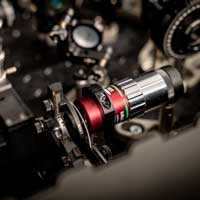 Scientists have developed a first proof-of-concept method that uses the same principle as ultrasound scanning in pregnancies, but on a much, much smaller scale.
Scientists have developed a first proof-of-concept method that uses the same principle as ultrasound scanning in pregnancies, but on a much, much smaller scale.
How molecules sit on surfaces drives energy and electron transfer
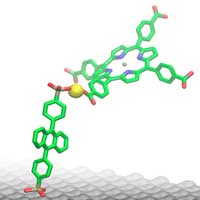 Researchers seeking to make newer, more energy efficient materials have made a breakthrough in understanding how structure dictates electron transfer across surfaces.
Researchers seeking to make newer, more energy efficient materials have made a breakthrough in understanding how structure dictates electron transfer across surfaces.
Highly deformable piezoelectric nanotruss for tactile electronics
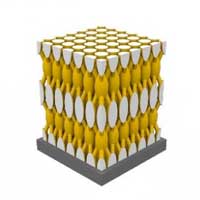 Scientists demonstrate the potential for the development of highly deformable ceramic piezoelectric materials by improving the elastic limit using a 3D hollow nanostructure.
Scientists demonstrate the potential for the development of highly deformable ceramic piezoelectric materials by improving the elastic limit using a 3D hollow nanostructure.
Pioneering photolithography for 7nm chips
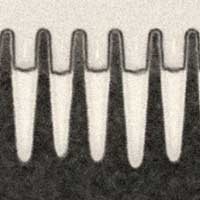 Cutting-edge photolithography technology has enabled the launch of a new generation of high-performance smartphones featuring powerful and efficient 7nm-node mobile processors.
Cutting-edge photolithography technology has enabled the launch of a new generation of high-performance smartphones featuring powerful and efficient 7nm-node mobile processors.
Islands without structure inside metal alloys could lead to tougher materials for transportation, energy and defense
 An international team of researchers produced islands of amorphous, non-crystalline material inside a class of new metal alloys known as high-entropy alloys. This discovery opens the door to applications in everything from landing gears, to pipelines, to automobiles. The new materials could make these lighter, safer, and more energy efficient.
An international team of researchers produced islands of amorphous, non-crystalline material inside a class of new metal alloys known as high-entropy alloys. This discovery opens the door to applications in everything from landing gears, to pipelines, to automobiles. The new materials could make these lighter, safer, and more energy efficient.
Fine Tuned: Adjusting the composition and properties of semiconducting 2D alloys
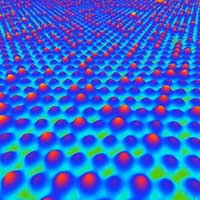 Semiconducting 2D alloys could be key to overcoming the technical limitations of modern electronics. Although 2D Si?Ge alloys would have interesting properties for this purpose, they were only predicted theoretically. Now, scientists have realized the first experimental demonstration.
Semiconducting 2D alloys could be key to overcoming the technical limitations of modern electronics. Although 2D Si?Ge alloys would have interesting properties for this purpose, they were only predicted theoretically. Now, scientists have realized the first experimental demonstration.
Say goodbye to the dots and dashes to enhance optical storage media
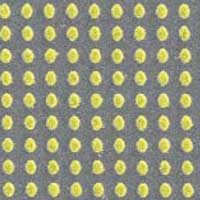 Scientists have created technology aimed at replacing Morse code with colored 'digital characters' to modernize optical storage. They are confident the advancement will help with the explosion of remote data storage.
Scientists have created technology aimed at replacing Morse code with colored 'digital characters' to modernize optical storage. They are confident the advancement will help with the explosion of remote data storage.
Nanocomposite structures enhance solar cell efficiency
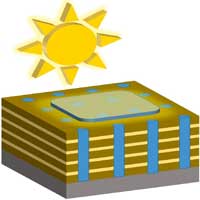 A new method for constructing special solar cells could significantly increase their efficiency. Not only are the cells made up of thin layers, they also consist of specifically arranged nanoblocks.
A new method for constructing special solar cells could significantly increase their efficiency. Not only are the cells made up of thin layers, they also consist of specifically arranged nanoblocks.
Visualising atomic structure and magnetism of 2D magnetic insulators
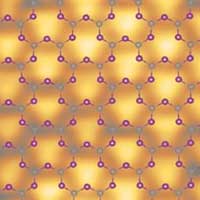 Scientists have demonstrated a general approach for characterising the atomic structure, and electronic and magnetic properties of two-dimensional (2D) magnetic insulators using scanning tunnelling microscopy.
Scientists have demonstrated a general approach for characterising the atomic structure, and electronic and magnetic properties of two-dimensional (2D) magnetic insulators using scanning tunnelling microscopy.
Twisted van der Waals materials as a new platform to realize exotic matter
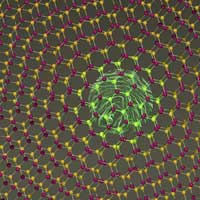 Researchers have provided a fresh perspective on the potential of twisted van der Waals materials for realising novel and elusive states of matter and providing a unique materials-based quantum simulation platform.
Researchers have provided a fresh perspective on the potential of twisted van der Waals materials for realising novel and elusive states of matter and providing a unique materials-based quantum simulation platform.
Subscribe to:
Comments (Atom)
